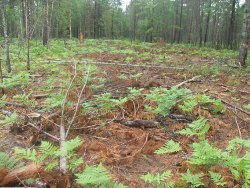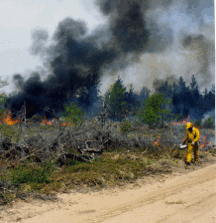Navigation
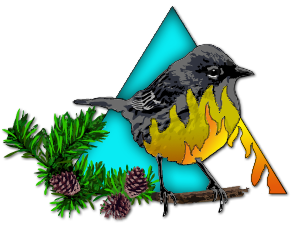
Demo Site Proposal Form
Click Here to Propose a Site for the Lake States FSC Network
Demonstration Site Network
The Lake States Fire Science Consortium is developing a network of demonstration sites for major fire-dependent ecosystems across the region that:
1) demonstrate natural fire regimes;
2) highlight issues related to fire and/or fuels management; and
3) illustrate fire and fuels management practices and the decisions that
support these management practices.
We are working to develop a web-based interface for these different demonstration sites using The Conservation Registry website. The Registry is an online, centralized database that records, tracks, and maps on-the-ground conservation projects. Click here to view presentation slides describing the use of The Conservation Registry with demonstration sites in the Lake States. Click here to learn more about The Conservation Registry. Need Assistance with a Potential Demonstration Site?
Current Demonstration Site Network
Sites that demonstrate natural fire regimes
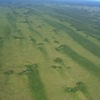 Seney
Wilderness Area, Seney National Wildlife Refuge, MI - Landscape with a relatively intact fire regime, including benchmark
stands (or "pine islands") of mixed red pine and eastern white pine.
Seney
Wilderness Area, Seney National Wildlife Refuge, MI - Landscape with a relatively intact fire regime, including benchmark
stands (or "pine islands") of mixed red pine and eastern white pine.
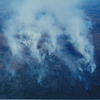 Little
Carp River Wildfire, Porcupine Mountains Wilderness State Park, MI - Wildfire from October 20, 2000 that burned over 1200
acres of old-growth hemlock-northern hardwood forest.
Little
Carp River Wildfire, Porcupine Mountains Wilderness State Park, MI - Wildfire from October 20, 2000 that burned over 1200
acres of old-growth hemlock-northern hardwood forest.
Gunflint
Blowdown Fires, Trails End, MN - After the massive blowdown event of 1999, three wildfires and a prescribed
burn changed Seagull Lake produced both expected and surprising changes.
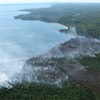 Keystone
Bay Wildfire, Michigan DNR, MI - Small fire
at tip of Keweenaw Peninsula of Upper Michigan on a shallow rocky site
that produced a severity representing a fire rotation disturbance, with
forest canopy mortality over much of the burned area.
Keystone
Bay Wildfire, Michigan DNR, MI - Small fire
at tip of Keweenaw Peninsula of Upper Michigan on a shallow rocky site
that produced a severity representing a fire rotation disturbance, with
forest canopy mortality over much of the burned area.
Sites that highlight issues related to fire and/or fuels management
Raco
Plains, Hiawatha National Forest, MI -
Landscape management strategy designed to restore and maintain a substantial
acreage of early successional and pine barren habitat, typically associated
with wildfire.
Kirtland's
Warbler Wildlife Management Area, U.S. Fish and Wildlife Service, Oscoda
Co., MI - Nearly 80-acre site demonstrates
the difference between patterns of fire in jack pine forests and the patterns
of plantations made for Kirtland's Warbler habitat
Gunflint
Blowdown Fires, Trails End, MN - After the massive blowdown event of 1999, three wildfires and a prescribed
burn changed Seagull Lake produced both expected and surprising changes.
Sites that illustrate fire and fuels management practices and the decisions that support these management practicies
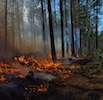 Muskrat
Lakes, Michigan DNR, MI - Cooperative effort to evaluate
the ecological impacts of prescribed fire when used for fuels reduction,
interaction of fire with pests and invasive species, restoration of fire-damaged
ecosystems and use of fire to restore ecosystems.
Muskrat
Lakes, Michigan DNR, MI - Cooperative effort to evaluate
the ecological impacts of prescribed fire when used for fuels reduction,
interaction of fire with pests and invasive species, restoration of fire-damaged
ecosystems and use of fire to restore ecosystems.
Underburning
to Control Hazel in Red Pine, Cutfoot Experimental Forest, MN - Research conducted from 1960-1970 suggest methodology
for controlling hazel and hardwood competition in the regeneration of
natural dry and mry-mesic pine forests.
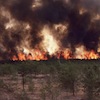 Mack Lake Fire staff ride. The Mack Lake Fire occurred on May 5th, 1980 on the Mio Ranger District, Huron-Manistee National Forests, in northern Lower Michigan. The Crane Lake prescribed burn, in jack pine slash, escaped control lines, jumped State Highway M-33 to the east, and became the Mack Lake wildfire. It resulted in one firefighter fatality, one civilian burn injury, and destroyed 44 homes and buildings.
Mack Lake Fire staff ride. The Mack Lake Fire occurred on May 5th, 1980 on the Mio Ranger District, Huron-Manistee National Forests, in northern Lower Michigan. The Crane Lake prescribed burn, in jack pine slash, escaped control lines, jumped State Highway M-33 to the east, and became the Mack Lake wildfire. It resulted in one firefighter fatality, one civilian burn injury, and destroyed 44 homes and buildings.
 Cut River, Fire use for Invasives Control, MI - A mesic northern hardwood forest where the MI DNR combined prescribed burns and herbicide treatments to control Garlic Mustard (Alliaria petiolata) over more than 70 acres.
Cut River, Fire use for Invasives Control, MI - A mesic northern hardwood forest where the MI DNR combined prescribed burns and herbicide treatments to control Garlic Mustard (Alliaria petiolata) over more than 70 acres.
Need Assistance with a Potential Demonstration Site?
In addition to promoting these sites as learning opportunities, the Consortium is prepared to support requests for funding to help consortium members develop interpretive materials and purchase equipment to help monitor treatments implemented on demonstration sites. Following JFSP rules, the implementation of treatments (e.g., labor costs, NEPA documents if necessary) will be provided by the individual consortium partners.
If you have any questions, contact us (lakestatesfiresci.net@gmail.com). Proposals will be reviewed promptly.
.

.png)
